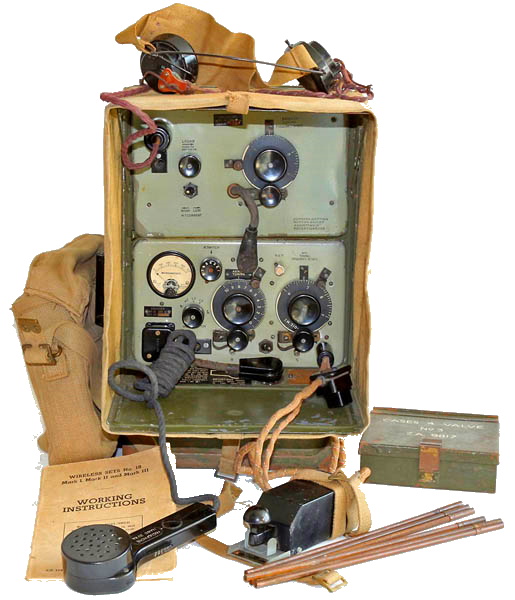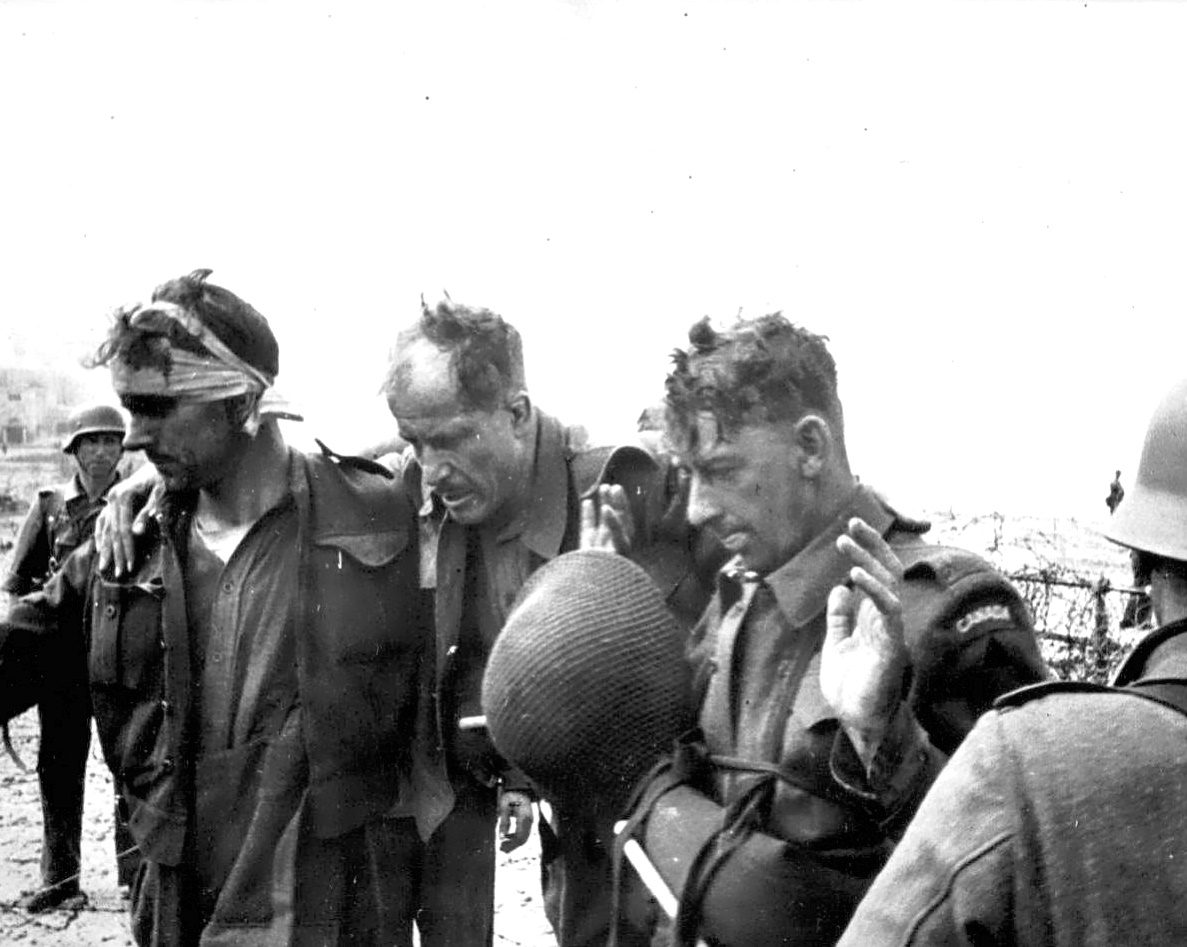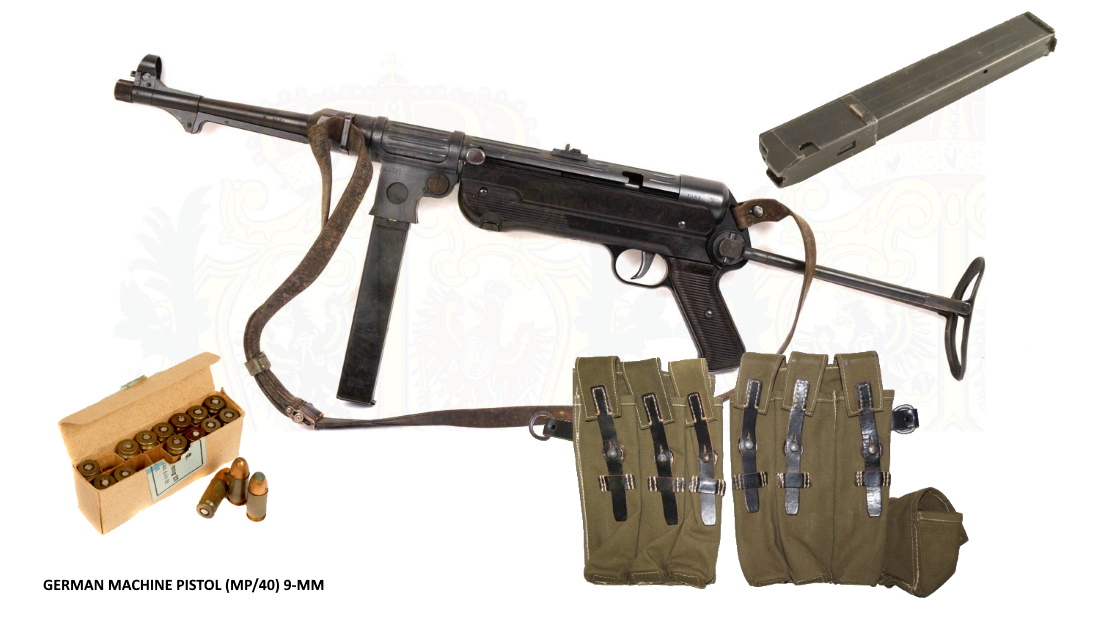(f) Wire Cutters
At least 10 minutes were spent waiting for wire-cutters to be passed up. Only one pair finally arrived. This was not because there was only one pair of wire-cutter, but because the dispersion of men on the beach, forced by the volume of fire, also dispersed the available wire-cutters. I saw one man shot trying to get his wire-cutters up to the colonel. There may have been others. For an operation of this nature, where barbed wires are to be expected, probably the scale of the issue should be increased.
(g) Accoutrement
 It was felt that the haversack carried on the back at shoulder height was an impediment, and interfered with the men’s fighting efficiently. The fact that so many men, who they were not carrying ammunition, grenades, and mortar bombs in them, threw them off, lends color to this view. Those who were carrying grenades or mortar bombs in the haversacks found it unhandy to get at when lying or crouching. It is of course the best position for marching, but not for fighting. Many of the Officers and NCOs thought that some form of shingler’s apron, modified, which would permit a man to crawl on his belly without losing the apron’s contents, would be much better than the haversack.
It was felt that the haversack carried on the back at shoulder height was an impediment, and interfered with the men’s fighting efficiently. The fact that so many men, who they were not carrying ammunition, grenades, and mortar bombs in them, threw them off, lends color to this view. Those who were carrying grenades or mortar bombs in the haversacks found it unhandy to get at when lying or crouching. It is of course the best position for marching, but not for fighting. Many of the Officers and NCOs thought that some form of shingler’s apron, modified, which would permit a man to crawl on his belly without losing the apron’s contents, would be much better than the haversack.
If the Bren mags are left in the pouches where they belong, the only place left for the M-36 grenades is the breast pockets of the battledress. Something after the fashion of the cotton bandoleer for .303 ball ammunition might be adapted to be worn on the upper outside of the thigh or on either hip, to carry M-36s, M-69s, and/or smoke grenades or generators. Such an adaptation would permit more than two grenades to be carried, with greater comfort and handiness. Scaling ropes or toggle-ropes of some sort would have been a great help in getting up through the wire. We had nothing like this with us.
(h) Communications
The Set N° 18: The set is heavy. If the man carrying it is in the stern of the LCA, it frequently happens that because of the kick-back of the man preceding him out of the craft, and the wave action, the LCA may have drifted out of a foot or two, forcing him to leap into the water to get to the shore. If as he may easily do, should lose his balance on rocks or slippery shale on the bottom, the weight of the set will topple him into the water. If the set, or the microphone or key assembly gets wet, the set will be out of action until the parts can be replaced or the set completely dried and cleaned. This was what happened to the Battalion’s HQ set, although it was as well wrapped up in gas capes as a set on the listening watch can be. Obviously, a more thorough method of waterproofing the set and its components must be found. My own set, an N°66 (in fact an N° 18 modified for Naval use) was not on listening watch while in the LCA, although pre-netted, and was, no aerial mast being fitted, very thoroughly wrapped in two gas-capes. Wilkinson, moreover, a big husky lad, had the good luck not to stumble as he went into two feet of water. The set, consequently, functioned. In this situation, where there was no battalion wireless, some alternative means of inter-company communication were essential. Runners, lamps, and flags could be used.
 Indeed, the Battalion Signal Officer, attempting to get his set operating, while reaching for a key assembly, exposed the side of his face for only a few seconds. Enough time for a German sniper to shoot him down. The alternative means then left were rockets, colored smoke, whistle signals, and signaling by small arms fire. This was not resorted to, either because the rockets and colored smoke were not present, or because suitable whistle and/or small arms fire signals were not known or had not been practiced. I was with the CG from the moment we reached the beach, and, as far as I know, he had no information from Brigade about the situation on the other beaches. Rockets, and/or colored smoke would have been of the greatest assistance here, as well as in inter-company communication. These points, it may be repeated, are the gist of discussion held among the remaining Officers of the Royals at Verneuil where we were held prisoners for a week after the attacks.
Indeed, the Battalion Signal Officer, attempting to get his set operating, while reaching for a key assembly, exposed the side of his face for only a few seconds. Enough time for a German sniper to shoot him down. The alternative means then left were rockets, colored smoke, whistle signals, and signaling by small arms fire. This was not resorted to, either because the rockets and colored smoke were not present, or because suitable whistle and/or small arms fire signals were not known or had not been practiced. I was with the CG from the moment we reached the beach, and, as far as I know, he had no information from Brigade about the situation on the other beaches. Rockets, and/or colored smoke would have been of the greatest assistance here, as well as in inter-company communication. These points, it may be repeated, are the gist of discussion held among the remaining Officers of the Royals at Verneuil where we were held prisoners for a week after the attacks.
Surrender
Col Catto and I surrendered to an Officer at Notre Dame de Bon Secours. The German Officer wore a Steel Helmet of the ordinary type with the Luftwaffe eagle painted on the side of the helmet instead of the usually stylized helmet eagle. He wore a cover-all of cotton or very light wool, quite shapeless, navy blue on color, with three white rings around the cuff of each loose sleeve. About his waist, he wore the six-magazine carrier for the MP-38/40 Schmeisser machine pistol magazines and carried the gun slung on one shoulder. He had no arm color that I could distinguish, and I was unable to discover what his arm of service was.
He took us to meet a senior German Officer present, who was standing surrounded by his staff on the cliff top by the telegraphic tower at Notre Dame de Bon Secours. This German was an Oberst, a small dark man not over 35 years, who wore a number of ribbons and an Iron Cross around his neck. He questioned ColCatto in hesitant English, assuring him that there was no more than one Regiment between Treport and Varengeville, and demanding to know how many Canadians had been in the attack. He got no information from us, and with a short laugh, finished his questions.
From Notre Dame de Bon Secours, the walking wounded and stragglers who had been rounded up at the school there were marched down to the Hotel Dieu in Dieppe which had been prepared as an Aid Post. The Hotel Dieu seemed to have been a deserted convent; at one time it may have been a hospital, for I remembered seeing large red crosses painted on the roof, and the front lawn had red crosses set in the flowers beds, but if it had been a hospital it was apparently short of hospital equipment. There were simply a large number of furniture missing, and just some wards with a number of beads in each. Running water or other plumbing and sanitary facilities there appeared to be none.
The Sisters, French nuns, and a few French civilians worked very hard trying to look after our wounded. The doctors who were German were busy looking after the last German wounded still remaining, and dispatching them to Rouen. At length, the doctors got round to our fellows and did as much as they could for them, with the dressings at hand. The doctor in charge was an Oberstartz, an ex-Serviceman, good-humored in a brusque manner who worked hard to patch up our wounded. He was assisted by a German captain and a lieutenant both M.O.’s and a Red Cross doctor who was, I think, a German, and from his costume appeared to be doing all the operating. A great part of the work was actually done, I later learned, by three or four of our own M.O.’s, Capt C.T. Robertson, II Fd Amb., the M.O. of the Essex whose name I don’t remember, and another M.O., a young Capt from, I think, II Fd Amb.
It may be of interest to remark upon the behavior of Canadian and British wounded and that of the few remaining German stretcher cases which I saw. Most of our stretcher cases were mortar-bomb wounds, very unpleasant and painful. From all the British and the French one civilian (a railroad employee) who were conscious on their stretchers, there was no murmur; those who had cigarettes and were able to smoke sucked stoically at a cigarette, the others play silent and uncomplaining. Not so the Germans, who were vocal and querulous in their pain. This was remarked by many of us, as well as by the French civilian in the hospital.
Between 1800 and 1900 all the non-wounded were fallen in at the Hotel Dieu and marched up to an abandoned factory at Bellengreville, arriving there about 2300, where they went to sleep. About a dozen of us remained at the hospital in the hope that we might be able to clear as many of the stretcher cases as could be moved to the station whence, according to the Germans, they would be routed directly to a base hospital at Rouen. The Germans had not more than four hospital orderlies who were used on the ambulances and away to the station. We were then taken out to the factory at Bellengreville. I later learned at Lyon from Commander, Prior R. M. that our stretcher cases were put into boxcars at the Dieppe Station and left there overnight.
Bellengreville
The following morning, August 20, at Bellengreville, we were issued with 300 grams of French army bread, a little stale, very hard, very dark, and very sour. It was most welcome. We also were given a mug of camomile tea. There I learned that all officers had been sent the night before to the church at Envermeu.
Our guards at Bellengreville were Jaeger troops, and except for the NCO who appeared to be a CSM or its equivalent, were very young.
They were also very well armed with MG 34/42 and MP-38/40 machine pistols. They wore the Jaeger cap, heavily studded boots ankle, and on the tunic sleeve above the elbow a badge which seemed to represent an Edelweiss or some such flower. I spent the morning talking with the Prize Troop RCA who had had only three casualties, and the remainder of the Royals. A few Canadians who could speak German appeared among the prisoners, and the Germans used them as interpreters and general Orderly Sergeants. A few German Officers appeared and took a keen interest in the Brigade and Battalion patches. Nearly all of the men still had their pay books and still wore the Regimental markings.
About 1100, I was driven, as the sole Officer remaining at Bellengreville, to Envermeu by a German Major. This type speaks quite good English and appeared to be fairly senior. I thought, from his service ribbons, that he was a World War One veteran. His opening remarks to me en route were ‘Well, where are your friends?’ I didn’t understand this, and he continued flourishing an arm vaguely to the north ‘There they are, the English, and there they will stay. You have spilled your blood for the English, and to no purpose.’ As I had personally spilled no blood whatever, no reply seemed indicated. ‘They will not come he continued, ‘never!’ I murmured that he need only to be patient, and he would see how mistaken he was. He started at me for an instant, grunted, and turned back in the front seat, and we finished the journey in silence.
At Envermeu, at the church, were the remaining uninjured Officers of the 4th Brigade, at about 1400, a mobile kitchen gave us a mug of very thick potato soup, very hot, very good. About 1800, the troops from Bellengreville were marched down to the Envermeu Station where we joined them. The NCOs and men were packed into box cars with signs ‘8 Chevaux 40 Hommes’; the Officers were loaded into 3rd or 4th class compartment coaches. It was a long train. The first coach behind the engine was open-sided and in it sat a few guards with machine pistols.
Half-way down the length of the train was another of these coaches with more guards similarly armed, and immediately in front of and behind the 1st two coaches which carried the Officers were two more open-sided coaches with the remainder of the guards with electricity torches and the machine guns supplementing their K-98 Mauser Rifles and MP-38/40 Schmeisser.
In spite of these precautions, one man at least got away. The engine driver, whether because of French sympathies, or because the train was too heavy for the locomotive could make much speed on the grades, and after dark, I saw one man getting away through trees beside the track. The train was instantly stopped and a quantity of ammunition was poured into the trees after him, but he got away. Escape in the tunnel was too risky, the guards using their torches with skill. The following morning, we arrived at Verneuil and marched from the Train Station to a Dulag 3 or 4 kilometers West of the Town.
Verneuil
The camp at Verneuil (French Department of the Eure) appeared to have been an original French Army camp, for the bunkhouses still carried on the numbers of forgotten pelotons (Platoons) and the twin triple-decker bunks still carried tags of French soldiers, 1st, 2nd, 3rd class, with their matricule numbers (Army Serial Numbers).
(End)
Additional Photos


















